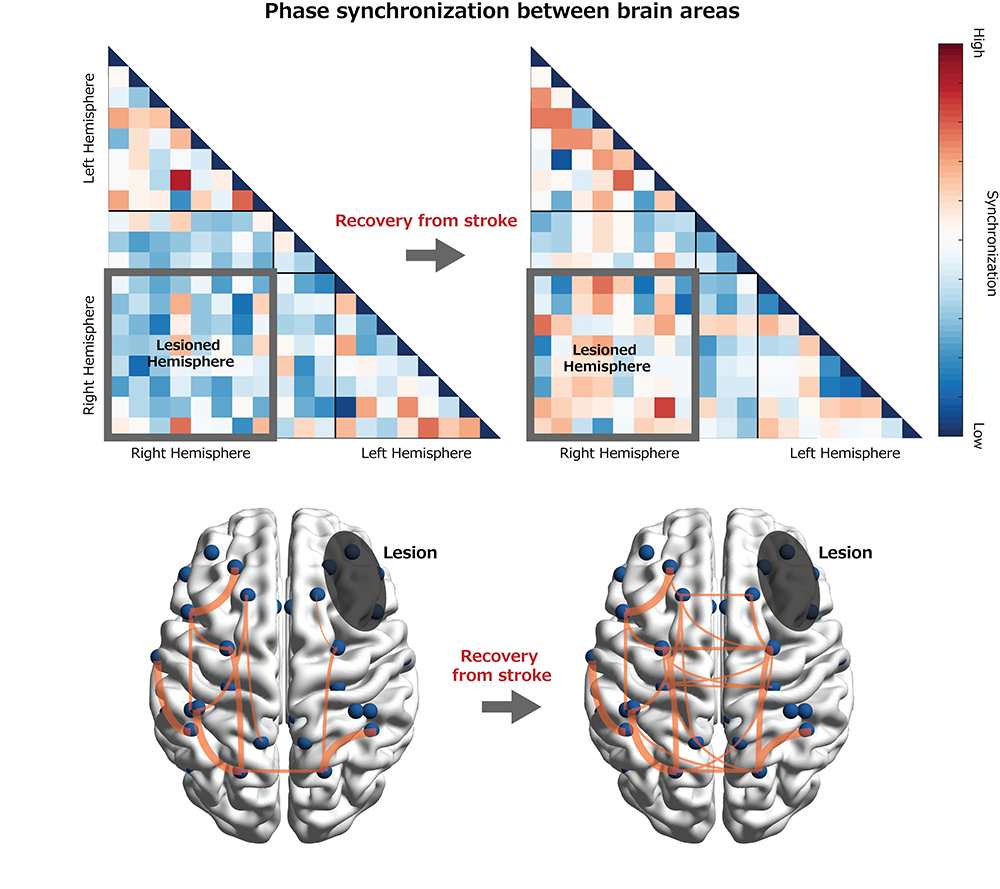Collaborative Clinical Research
For mutual understanding between clinical research and basic research, studies on epilepsy and stroke using electrocorticogram (ECoG) and scalp EEG (electroencephalogram, EEG), are in progress. We aim to understand the dynamics of normal neural activity by contrasting them to those of abnormal neural activity and give feedbacks to basic research on brain functions such as perception, movement, memory, attention, language, learning, and social functions.
1. Brain dynamics that change depending on the clinical state
Epileptic seizures are caused by sudden hyperexcitation of neurons. Focusing on the oscillatory dynamics and information flow of EEG associated with seizures, we are trying to elucidate the cause and mechanism of epileptic seizures.
2. Brain dynamics that adapt to the environment
Brain lesions resulting from stroke cause motor, sensory, and cognitive dysfunctions. Although these dysfunctions are due to the local brain damage, we regard stroke as disorders of the global network dynamics. We believe that functional recovery without regenerating the damaged neurons is attributed to the reorganization of the functional networks. Therefore, our aim is to study "brain plasticity", focusing on network dynamics of how the brain adapts to changes during the recovery process. Ultimately, we hope to contribute to the design of new rehabilitation therapies, including manipulative techniques (e.g., brain stimulation, neurofeedback), and maximization of functional recovery.
Reference:
Teiji Kawano, Noriaki Hattori, Yutaka Uno, Megumi Hatakenaka, Hajime Yagura, Hiroaki Fujimoto, Tomomi Yoshioka, Michiko Nagasako, Hironori Otomune, Keiichi Kitajo, Ichiro Miyai, Electroencephalographic phase synchrony index as a biomarker of post-stroke motor impairment and recovery. Neurorehabilitation and Neural Repair (in press) 2020.
